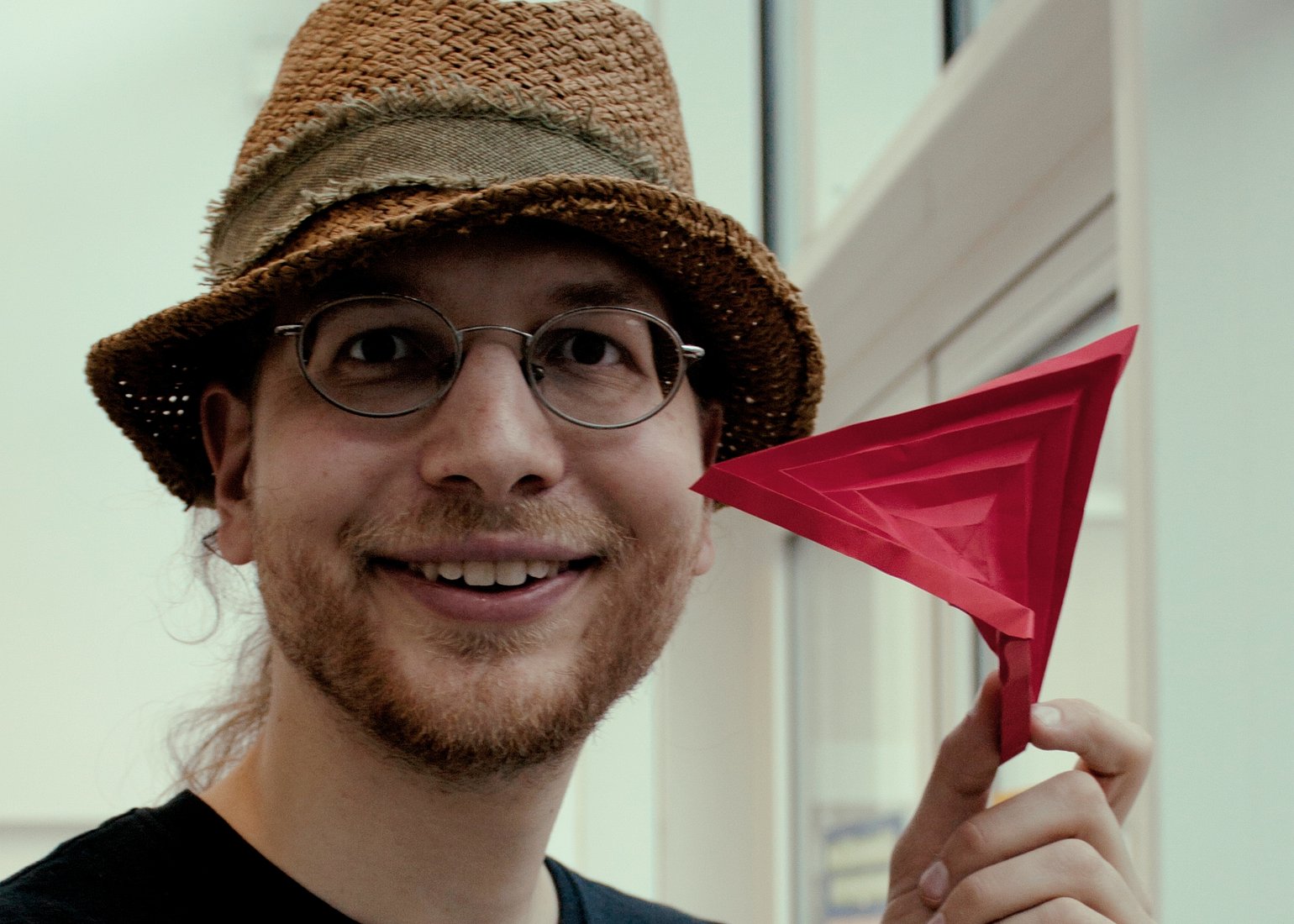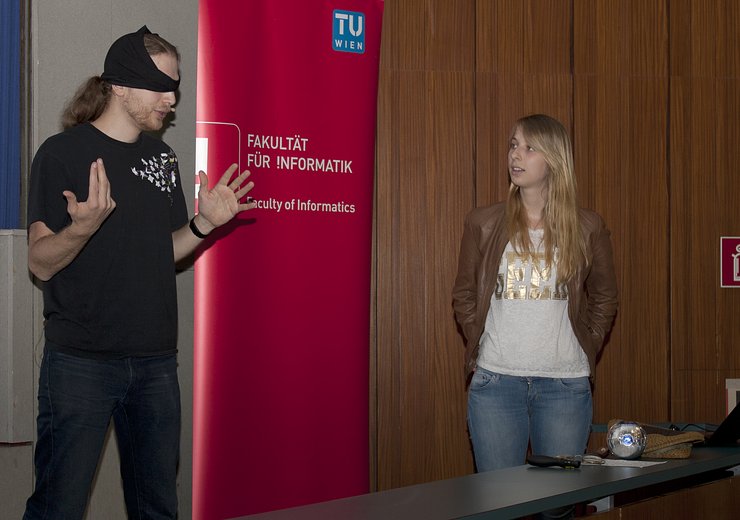“Origami Folding – The Elegance of Algorithms”
Erik Demaine’s fascinating Origami folding techniques follow complex algorithms that can be used in robotics and even in astronautics.

Picture: TU Wien Informatics
About
Erik D. Demaine is a professor of Computer Science at the Massachusetts Institute of Technology and was born in Canada. Demaine joined the faculty of the MIT in 2001 at age 20, reportedly the youngest professor in its history. He was promoted to full professorship in 2011. Demaine’s research interests range throughout algorithms, from data structures for improving web searches to the geometry of understanding how proteins fold to the computational difficulty of playing games.
Erik Demaine sparks with enthusiasm when he talks about Origami folding techniques and the algorithms behind them. At the second Vienna Gödel Lecture of TU Wien Informatics on June 4th, 2014, the 33-year-old professor of Computer Science demonstrated how much fun mathematics can be, and that there is more to folding algorithms than just being playful.
Brain Teasers and Magic - Is It Just Mathematics?
Right at the beginning of the lecture, Erik gave the audience a brainteaser: A paper with several differently oriented portraits of the logician Kurt Gödel had to be folded in such a way that in the end, only three heads are visible in a certain way. His enthusiasm for folding techniques leaped over to the audience, and some people solved the tricky task during the lecture. Erik Demaine is not only a computer scientist and artist, but he could also be called a magician. His tricks range from folding paper turned into a swan or a fish with a single cut, to turning coins over until they are placed all on the same side of the coin. But behind all this, there are algorithms.
The Algorithms of Folding
“The combination of science and art is a very powerful one,” said Demaine, convinced of the beauty of mathematics. He is particularly interested in the intersection of the two disciplines and how mathematical findings can be made comprehensible through visualization. Origami folding does not only appeal to him for solving mathematical problems or creating a beautifully designed work of art. In addition to creating paper sculptures, he is also intensively involved with folding algorithms in the field of robotics and hydraulic pipe bends. “Folding techniques are also essential when it comes to transporting something very large.” Demaine cites solar cells for satellites as an application example, which have to be transported in relatively small space shuttles. Having arrived in space, they are unfolded up to ten times their size. He even dreams of a small, foldable complete set of equipment for camping trips, which can be converted into a cooker or a tent as required - not made of paper, of course.
Links
- Der Standard (04.06.2014): Das Potenzial der freien Entfaltung
- ORF OE1 (06.06.2014,19:05): Dimensionen - Die Welt der Wissenschaft
- Computerwelt (20.06.2014): Demaine: Die Schönheit der Algorithmen
- Der Falter/Heureka (25.06.2014): Die Logik zum Glück
Download
-
Puzzle / Erik designed a special Vienna Gödel Lecture Puzzle.PDF / 336 KB / godel_A4.pdf
Curious about our other news? Subscribe to our news feed, calendar, or newsletter, or follow us on social media.










